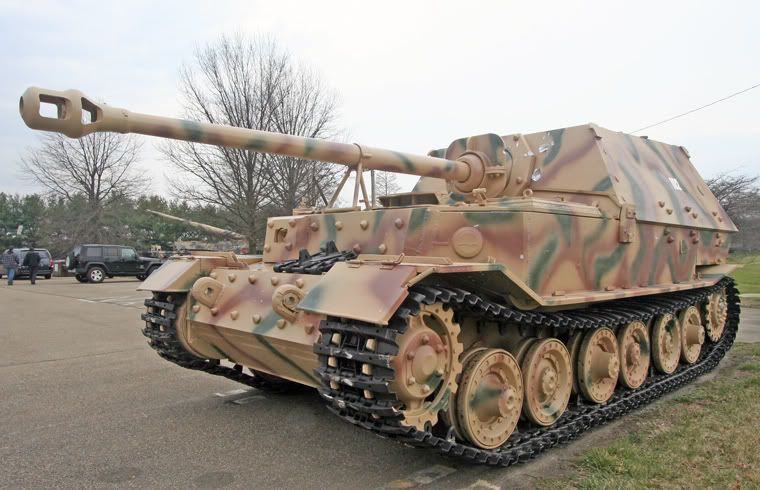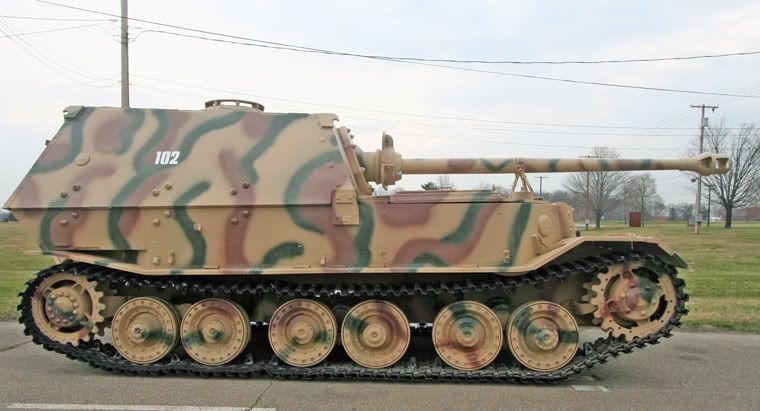As James started a thread about dunkelgrau I figured this might still be of interest for the members of this forum.
So here I go, or should i say here goes Thomas Jentz :
Comments on the Newly Repainted Elefant at the Ordnance Museum by Thomas L. Jentz, Panzer Tracts
Surviving photos that have been found to date of the Elefant with tactical number 102 do not have sufficient contrast to determine the exact camouflage pattern on all surfaces. However photos of three other Elefants from the same unit, the 1.Kp./s.Pz.Jg.Abt.653, reveal that the camouflage style and pattern varied significantly on each one. From early 1943 to the August 1944, usually camouflage patterns were sprayed on by personnel from the maintenance workshop following the general guideline that camouflage patterns were to be different on every vehicle, gun, tank, etc.
In February/March 1944 the refurbished Elefants left Nibelungenwerk with a base coat of RAL 7028 (Dunkelgelb). At this time, general orders instructed units to apply RAL 6003 (Olivgruen) and RAL 8017 (Rotbraun) to create camouflage patterns that would best blend in with terrain in their operating area.
The attached photos of the newly repainted Elefant provide an excellent example of how spray painting camouflage patterns causes the color to vary based on the number of passes. With a single pass the base coat still shows through, medium coverage is achieved by two passes, and a much darker shade is the result of three or more passes.
The new paint job does not have the same dull "Matt" finish of the paint used during the war. However it should be recognized, that a thin coat of matt paint is not an acceptable protective coating for a museum artifact that is on display outside in the elements.
A recent attempt by a private restorer to make an authentic batch of Zimmerit using the original mixture of ingredients was not successful because some of the chemicals are not available at acceptable costs. In addition this original Zimmerit coating quickly deteriorates on an artifact that is displayed outside in the elements. Museums in other countries have substituted a synthetic epoxy based "Zimmerit" which withstands a lot of abuse. However, the Ordnance Museum is not funded for this type of restoration. Is there someone so interested in exacting authenticity that they are willing to donate the funds needed to get a coating of synthetic "Zimmerit" applied to this Elefant? Their generosity would be greatly appreciated.
The staff and new director at the Ordnance Museum should be thanked for creating a camouflage pattern on this Elefant using paint colors that are close enough for government work in matching the original RAL 7028, RAL 6003, and RAL 8017 colors. They should be congratulated for having added one more unique specimen to the few members currently in the exclusive club of authentically painted Panzers. The Tiger I and Pz.Kpfw.III Ausf.L at The Tank Museum in Bovington, England and a Jagdpanther in the SdKfz Foundation in Kent, England are also members of this exclusive club. This small cadre are now available as a useful reference source for those who desire to paint their models accurately.
Sending your thanks and congratulations for a job well done to the Ordnance Museum at their email address: museum@ocs.apg.army.mil will encourage them to paint additional Panzers in authentic camouflage colors and patterns. This will help create a great reference source for the modeling community which currently depends heavily on erroneously colorized drawings in publications as references.
Thomas L. Jentz, April 6th 2008.
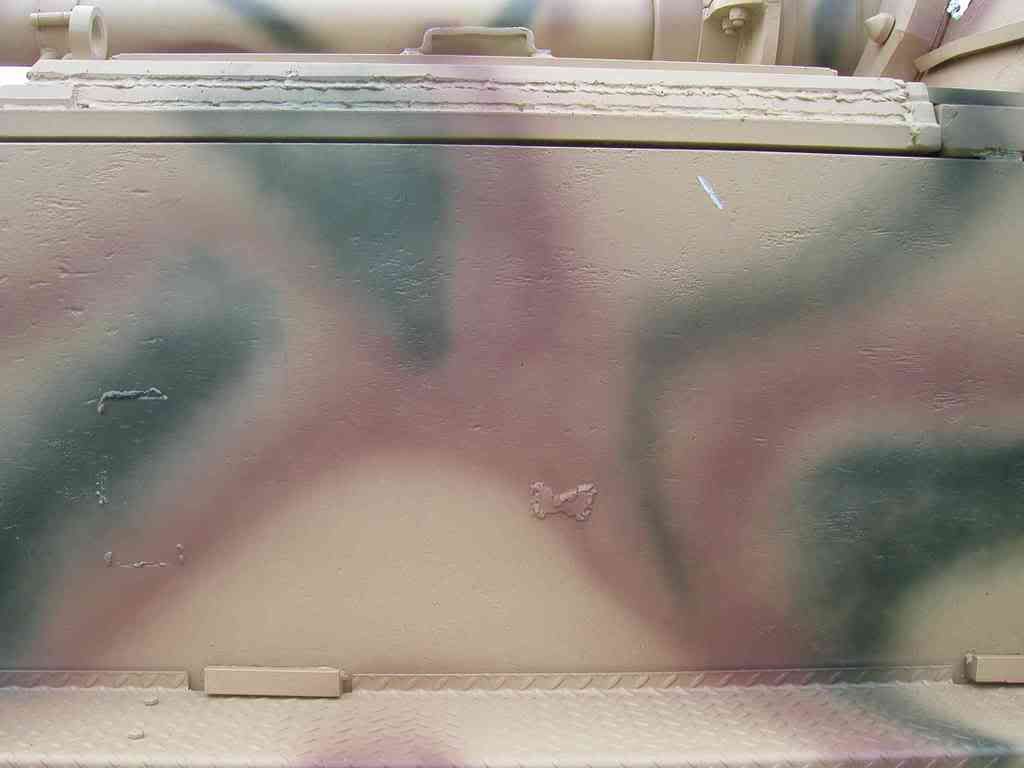
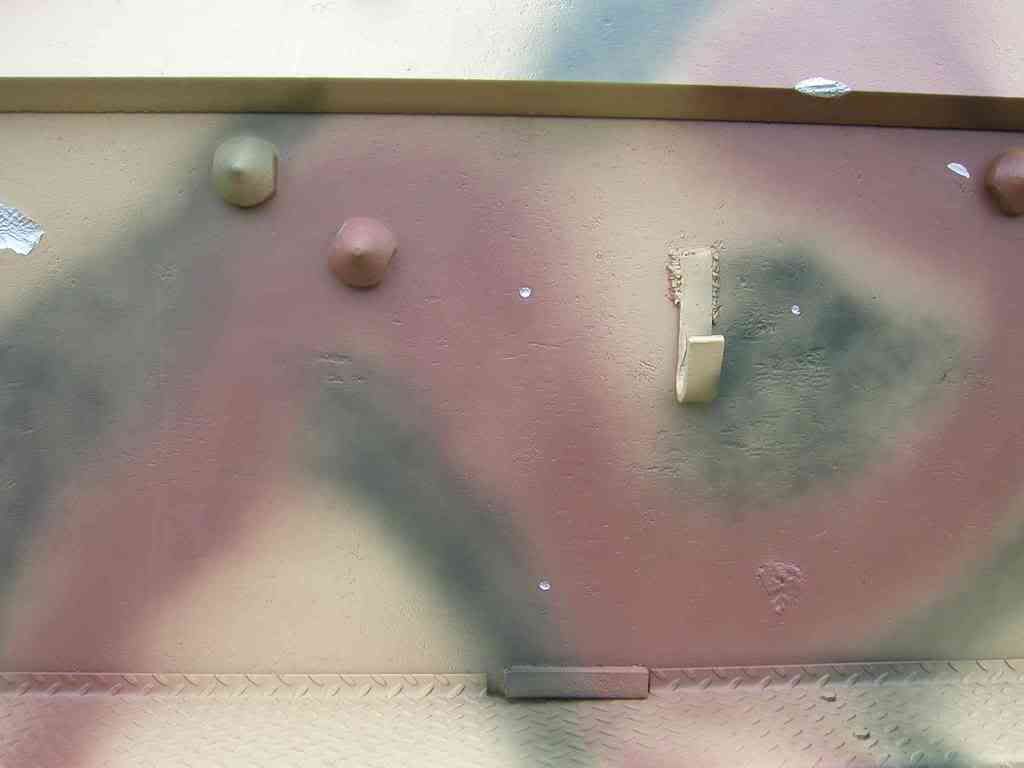
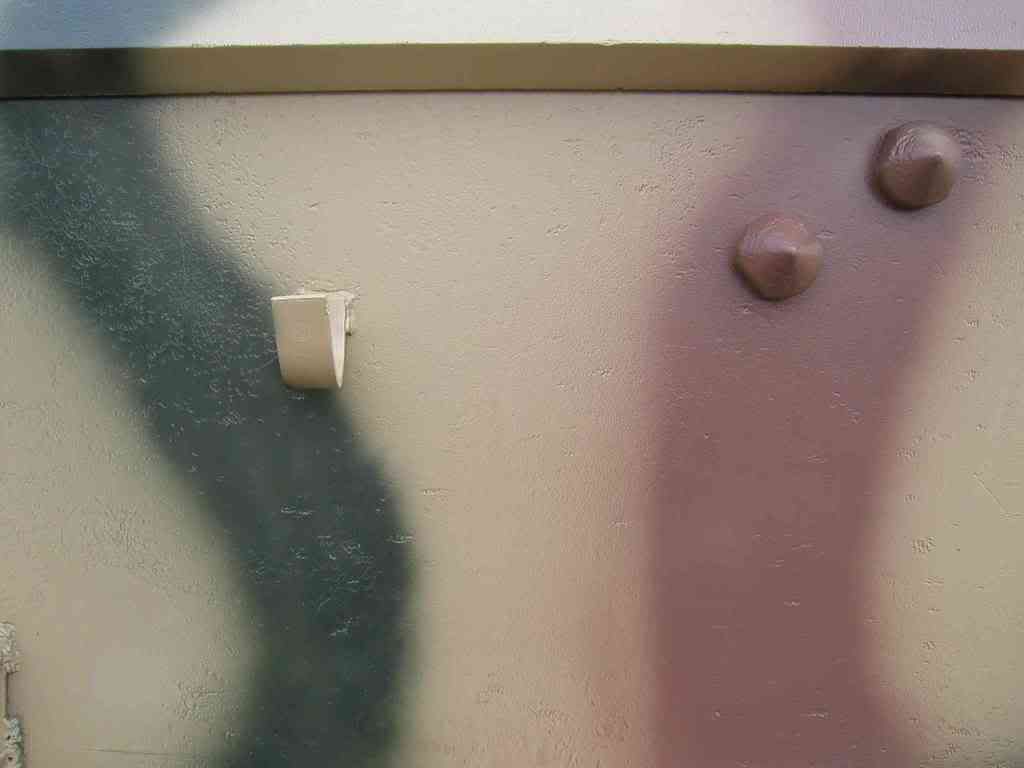
here are the pictures posted by Steve Zaloga a few days ago :
